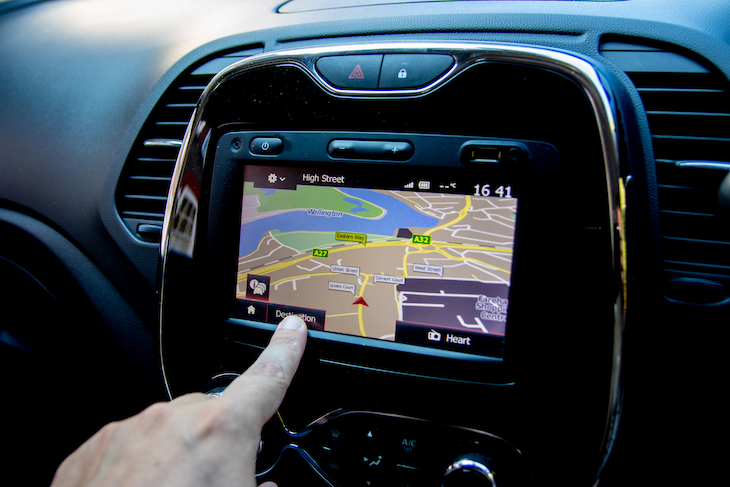Many new cars are fitted with integrated dashboard sat navs as standard. But if not, almost all drivers either use dedicated sat nav devices, or navigation apps on their phones.
In this post we’ll explain how to use your sat nav safely and legally. If you don’t use your sat nav properly, it could land you in trouble with the police, and place you and your passengers in danger.
Where To Put a Sat Nav: Dashboard or Windscreen
It’s important to place it somewhere you’ll see it without obscuring your view of the road. For best results, get a device that will let you mount your device to your dashboard. But if this isn’t possible, place your device as low on the windscreen as you can.
Where To Put a Sat Nav on Windscreen
To minimise your sat nav intruding on your view of the road, place it low down and to your left or your right, so that it’s out of your general view. But don’t place it anywhere you’ll have to take your attention away from the road to look at it.
You can read our full guide to placing your sat nav.
How to Us a Sat Nav: Step by Step
- Planning Your Journey
Most sat navs let you specify a postcode for your destination. You may also be able to search for an address or a destination by name, and to browse for services and amenities in an area, such as petrol stations.
The most important thing is that you set your destination before you start driving.
It is now an offence to use your phone in any way while driving, and this includes interacting with its navigation features. Though this law does not apply to mounted or integrated sat navs, you still have a legal obligation to exercise proper control of your vehicle at all times.
If police catch you using your mobile while driving – even if it’s to quickly check your route – you could get at least a £200 fine and six penalty points on your licence.
So set your route before you start driving. And if you have to make any changes to your route, pull over to a safe location and stop your engine before you do so.
- Check Your Journey
Having set your destination, check the route the sat nav chooses before you set out. This will help you ensure that you are indeed headed to the right destination, and that you won’t encounter any major delays or unsuitable roads along the way.
- Follow Your Sat Nav Without Losing Awareness of your Surroundings
To many people sat navs are now an indispensable part of driving. But they do make mistakes from time to time. So even when you’re following a sat nav, it’s still important to pay attention to the road. Make sure your device isn’t sending you down any private roads or one-way streets.
Repeatedly checking your sat nav can be distracting. Turn on your device’s voice guidance and you’ll be able to focus on the road ahead of you.
- Keep Your Sat Nav Updated
Navigation apps on phones tend to update themselves. But if you’re using a dedicated device, or an integrated dashboard sat nav, you may have to arrange updates yourself.
If your maps are out of date, your sat nav could give you misleading directions, as it won’t know about new roads, signals, and roundabouts. At best this could confuse you and get you lost. But at worst it could lead to an accident.
Following a Sat Nav in Your Driving Lessons
Learner drivers – following directions from a sat nav now forms part of your driving test! Ask your driving instructor for some tips, and try following a sat nav when you practice outside of lessons.
Remember that when you drive outside of your lessons, you’ll have to arrange for your own learner car insurance. And if you practice in someone else’s car, make sure their insurance policy covers you as a learner driver.
We specialise in flexible and affordable insurance for learner drivers. Learn more and get a free quote online.




